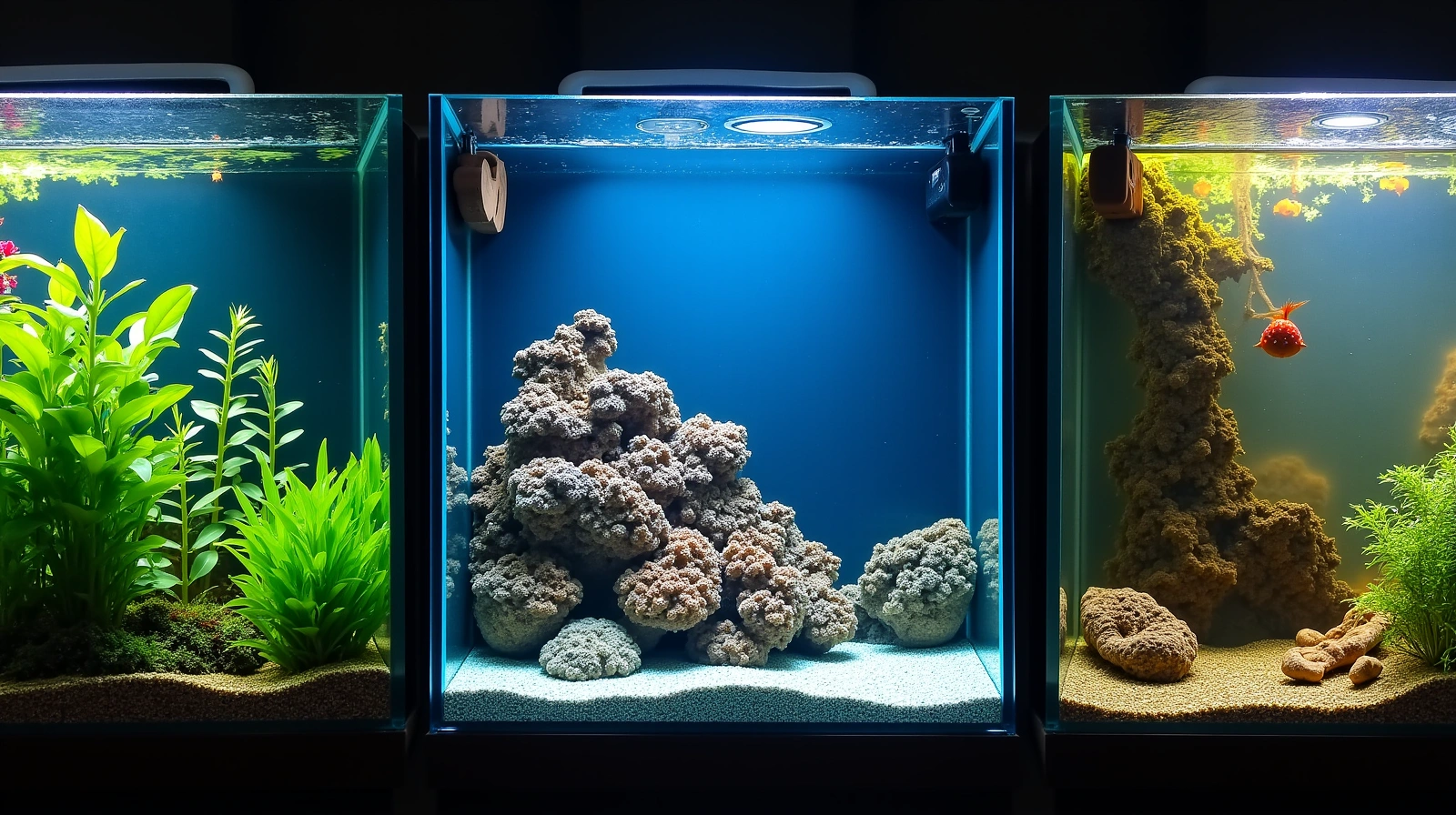
Dive deep into the fascinating realm of aquatic ecosystems. Whether you're a seasoned aquarist or just starting, understanding the different types of aquariums is the first step to creating your perfect underwater world. From vibrant freshwater havens to complex marine reefs, each type offers a unique challenge and boundless beauty.
Freshwater aquariums are often the starting point for many hobbyists, offering a wide array of options from peaceful community tanks to intricate planted landscapes. They are generally less demanding than their saltwater counterparts but still provide immense opportunities for creativity and observation.
Tropical freshwater aquariums are arguably the most popular choice, renowned for their colorful fish and relatively easy maintenance. These tanks typically maintain temperatures between 75-80°F (24-27°C) and house a diverse range of species like tetras, guppies, mollies, and angelfish. Setting up a tropical tank involves a heater, filter, and appropriate lighting, along with decorations that provide hiding spots and visual interest.
Common fish include: Neon Tetras, Guppies, Mollies, Platies, Swordtails, Angelfish, Dwarf Gouramis, Corydoras Catfish. Plants often include: Java Fern, Anubias, Amazon Sword, Vallisneria. Essential equipment: Heater, power filter (HOB or canister), LED lighting, substrate (gravel or sand).
These tanks are excellent for beginners due to the hardiness of many tropical species and the readily available equipment. Regular water changes and a balanced diet are key to their success.
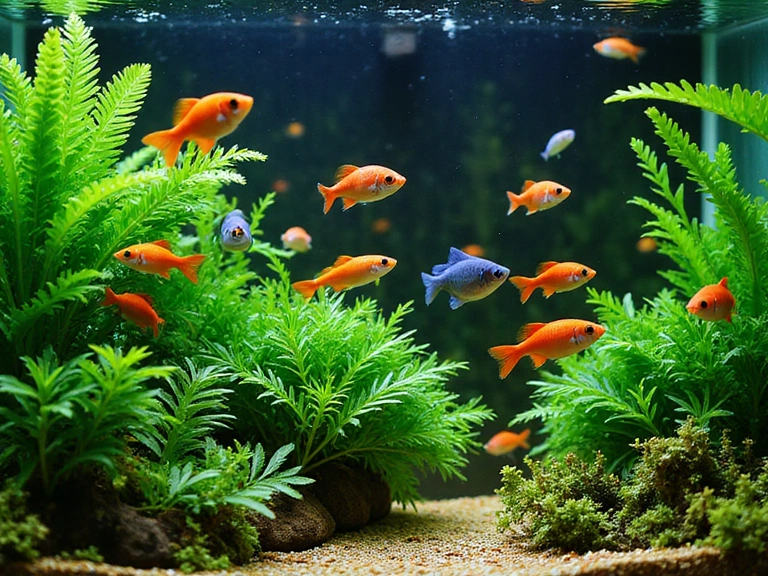
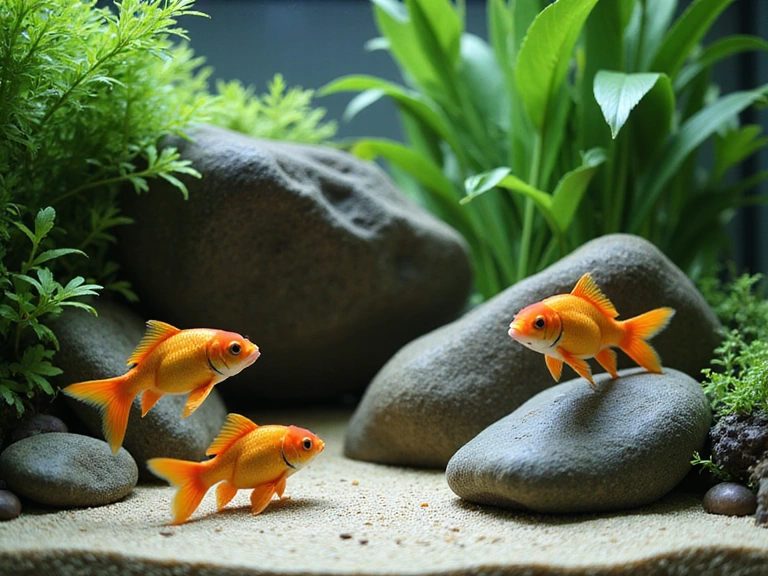
Coldwater aquariums, most famously home to goldfish, do not require a heater, making them a simpler setup in some respects. However, they demand excellent filtration due to the waste produced by their inhabitants. Goldfish, while beautiful, grow quite large and require spacious tanks. Other coldwater species include White Cloud Mountain Minnows, which are much smaller and can thrive in cooler temperatures.
Common fish: Goldfish (various breeds), White Cloud Mountain Minnows. Specific care: Excellent filtration is crucial, larger tank sizes are often needed for goldfish (at least 20 gallons for the first, plus 10 gallons for each additional). Temperature typically ranges from 65-72°F (18-22°C).
While seemingly low-maintenance without a heater, the specific needs of coldwater fish, particularly goldfish, for clean water and ample space are paramount for their health and longevity.
Planted aquariums, or aquascapes, elevate the hobby to an art form, focusing on the aesthetic arrangement of aquatic plants, rocks, and driftwood. These tanks create stunning underwater landscapes that can mimic natural scenes. They require specialized equipment such as high-intensity lighting, CO2 injection systems to promote plant growth, and nutrient-rich substrates.
Key elements: Diverse aquatic plants (carpeting plants, stem plants, mosses), CO2 systems, powerful LED lighting, nutrient-rich substrate, fertilizers. Fish selection is often secondary, focusing on species that won't uproot plants (e.g., small tetras, rasboras, shrimp).
Aquascaping demands a deeper understanding of plant biology, water chemistry, and artistic principles. The reward is a dynamic, living piece of art that constantly evolves.
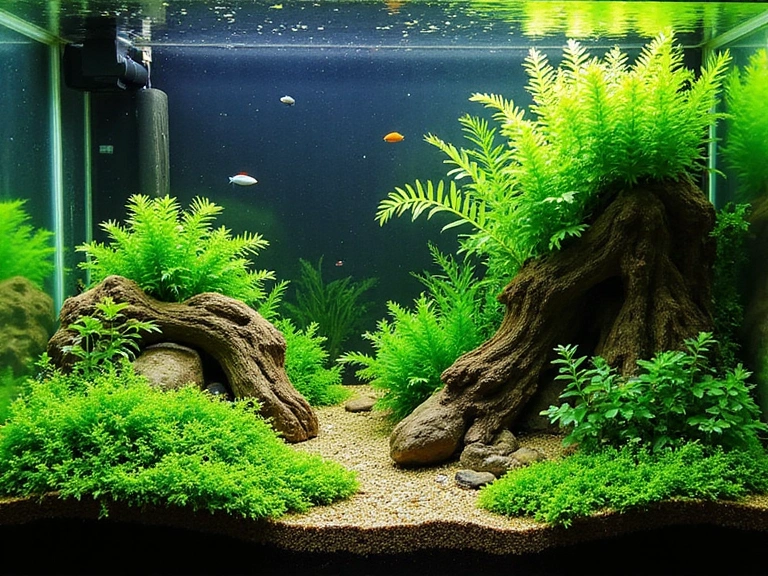
Saltwater aquariums are the pinnacle of the aquarium hobby, offering unparalleled beauty and a glimpse into the vibrant ecosystems of the world's oceans. While more challenging and costly to set up and maintain, the reward of a thriving marine environment is immense.
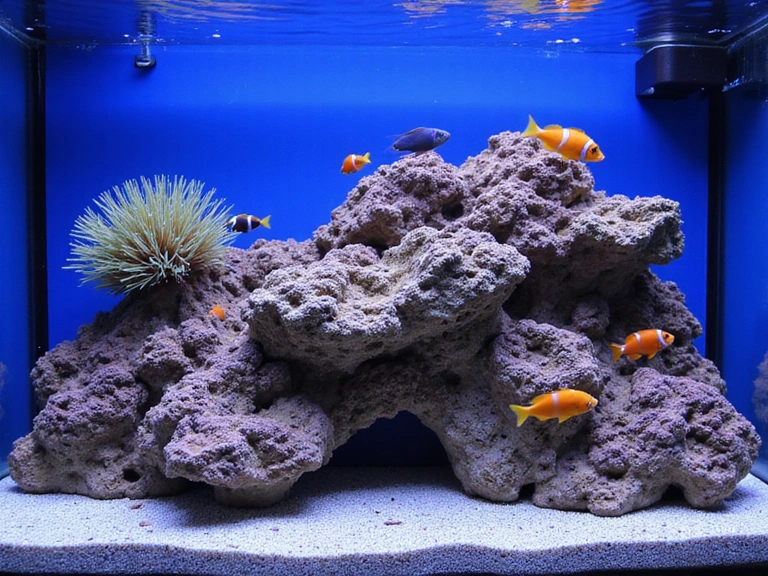
FOWLR tanks are a great entry point into saltwater aquariums, focusing on marine fish and the natural filtration provided by live rock. They are less complex than reef tanks as they don't house corals, which have very specific lighting and water parameter demands. Live rock provides biological filtration and numerous hiding spots for fish, making it a crucial component.
Common fish: Clownfish, Damselfish, Tangs, Angelfish (some species), Blennies, Gobies. Filtration: Live rock is key for biological filtration, supplemented by protein skimmers, power filters, and sometimes sumps. Equipment: Heater, protein skimmer, powerheads for circulation, robust lighting (less intense than reef tanks), salinity testing tools.
While still requiring precise water chemistry and dedication, FOWLR tanks allow hobbyists to enjoy a wide variety of stunning marine fish without the extreme demands of coral keeping.
Reef aquariums are the most advanced and rewarding type of saltwater tank, housing not only marine fish but also a diverse array of corals and invertebrates. These tanks aim to replicate a natural coral reef ecosystem, demanding precise control over water parameters, intense lighting, and specialized equipment. Corals are living animals that require specific light spectrums, water flow, and nutrient levels to thrive.
Inhabitants: Soft corals (e.g., Zoanthids, Mushrooms), LPS (Large Polyp Stony) corals (e.g., Frogspawn, Hammer), SPS (Small Polyp Stony) corals (e.g., Acropora, Montipora), various invertebrates (shrimp, crabs, snails), and reef-safe fish. Advanced equipment: High-output LED or T5HO lighting, protein skimmer, calcium reactor or dosing pumps, powerful wave makers, refugium, chiller (if needed), precise testing kits.
Reef aquariums are a commitment, requiring daily monitoring and consistent maintenance, but the vibrant colors, intricate life, and dynamic ecosystem they create are truly mesmerizing.
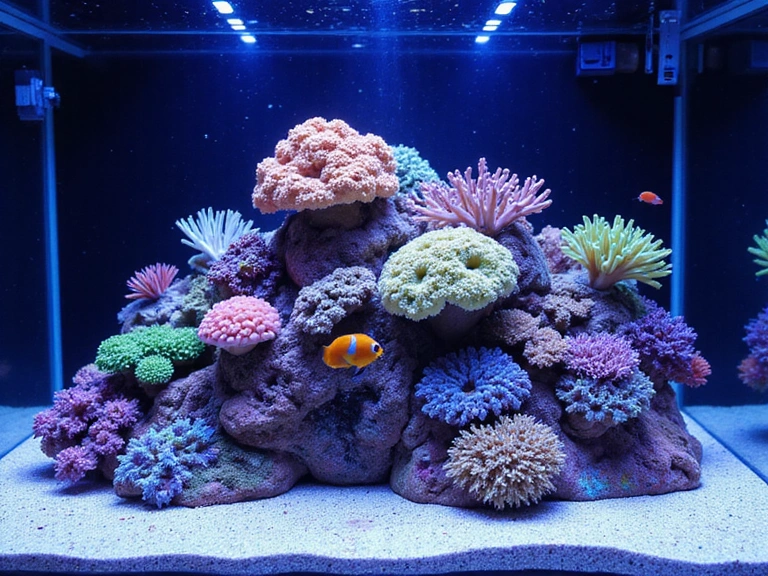
Brackish aquariums offer a fascinating niche in the hobby, replicating the environment found where fresh and saltwater meet. These unique ecosystems are home to specialized fish and invertebrates adapted to fluctuating salinity levels, providing a less common but equally rewarding challenge for the dedicated aquarist.
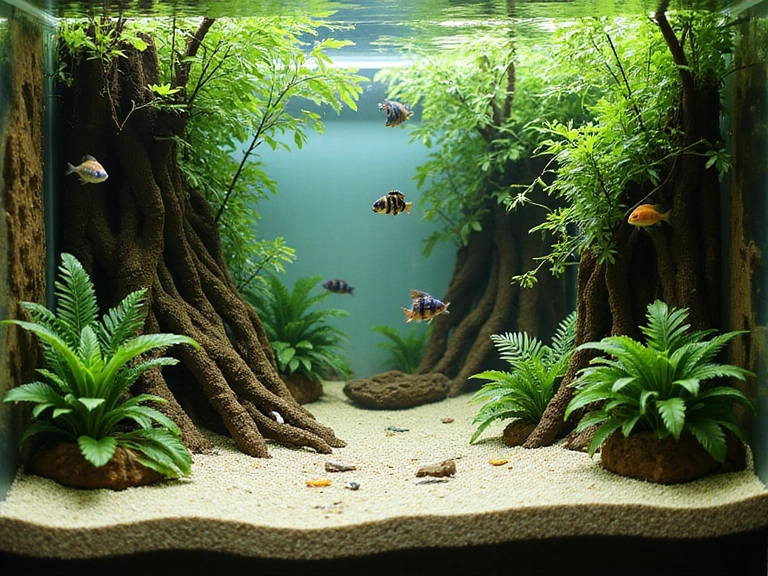
Brackish water is a mixture of fresh and saltwater, typically found in estuaries, mangrove swamps, and river deltas. The salinity in these environments can vary significantly, so brackish aquariums require careful monitoring and adjustment of salinity levels. This unique habitat supports species that cannot thrive in either pure fresh or pure saltwater, making for a truly distinctive display.
Unique inhabitants: Green Spotted Puffers, Figure 8 Puffers, Archerfish, Monos, Scats, some species of Mollies (e.g., Sailfin Mollies), and Bumblebee Gobies. Specific requirements: Salinity is key, usually maintained between 1.005 and 1.015 specific gravity. RO/DI water and marine salt mix are necessary. Good filtration is also important. Decorations often include mangrove roots, smooth rocks, and sand substrate.
Setting up a brackish tank requires research into the specific salinity needs of your chosen inhabitants and consistent monitoring. The reward is a captivating ecosystem unlike any other, showcasing nature's adaptability.
To help you decide which aquarium type best suits your lifestyle and experience level, here's a comparative table highlighting key aspects of Freshwater, FOWLR, and Reef aquariums.
| Feature | Freshwater | FOWLR (Saltwater) | Reef (Saltwater) |
|---|---|---|---|
| Complexity | Low to Medium (e.g., community to planted) | Medium to High | Very High |
| Initial Cost | Low to Medium | Medium to High | High to Very High |
| Maintenance | Regular water changes, filter cleaning | Regular water changes, salinity checks, protein skimmer maintenance | Daily checks, frequent water changes, precise parameter testing, dosing |
| Equipment Needs | Heater, filter, lighting, substrate | Heater, robust filter, protein skimmer, powerheads, RO/DI unit, hydrometer | High-output lighting, advanced filtration (sump, refugium), protein skimmer, calcium reactor/dosing, wave makers, chiller |
| Inhabitants | Fish, snails, shrimp, aquatic plants | Marine fish, live rock, some hardy invertebrates | Marine fish, diverse corals (Soft, LPS, SPS), wide range of invertebrates |
| Ideal For | Beginners, those seeking vibrant planted displays, lower budget | Intermediate hobbyists, marine fish enthusiasts, stepping stone to reef | Experienced hobbyists, those seeking ultimate challenge and beauty, higher budget |
Brackish aquariums, while not in this table, fall somewhere between freshwater and FOWLR in terms of complexity and cost, with unique requirements for salinity management.